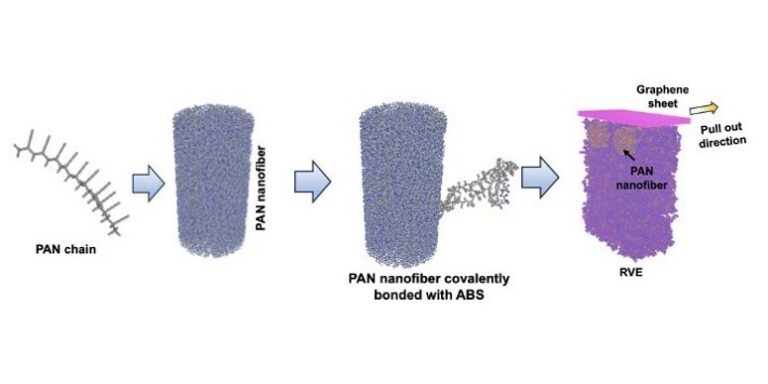Supercomputing Breakthrough Boosts Carbon Fiber Strength

Published by Quantum Server Networks – June 2025
Carbon fiber — stronger than steel and lighter than aluminum — is already a vital material in aerospace and automotive applications. Now, scientists at Oak Ridge National Laboratory (ORNL) have taken a giant leap in improving its performance using one of the world’s most powerful tools: the Frontier exascale supercomputer.
In a project announced on June 19, 2025, the Oak Ridge Leadership Computing Facility detailed how researchers simulated the behavior of 5 million atoms to explore new ways of strengthening carbon-fiber composites using a fine layer of polyacrylonitrile (PAN) nanofibers. The simulations were powered by Frontier, currently the world’s fastest supercomputer for open science, achieving speeds over 2 exaflops.
Atomic Insights through Exascale Computing
Led by scientists Tanvir Sohail and Swarnava Ghosh, the ORNL team developed an atomistic model integrating PAN nanofibers into a polymer matrix surrounding carbon fiber strands. These nanofibers, just 6–10 nanometers in diameter, act as a stress-redirecting layer that improves the bond between the carbon fiber and the polymer resin. The result? Composite materials with up to twice the tensile strength.
Traditional testing of carbon fiber is both expensive and time-consuming. Frontier's computing power allowed the team to bypass this barrier by performing highly detailed molecular dynamics simulations using LAMMPS (Large-scale Atomic/Molecular Massively Parallel Simulator), an open-source software for modeling materials at the atomic level.
The Role of PAN Nanofibers
Using a graphene sheet to simulate stress testing, researchers observed how PAN nanofibers aligned more uniformly when their diameter was optimized around 6 nanometers. This uniform alignment improved both mechanical strength and stress transfer, making the composite significantly more durable — especially at the weak interface between fiber and matrix.
Electrospinning was the method of choice for producing these PAN nanofibers, a technique that involves a spinning drum and electric field to stretch fibers thinner than a human hair by more than 100 times. These ultrathin reinforcements proved essential in guiding stress away from the brittle interfaces.
Implications for Industry
ORNL’s findings, published in Advanced Functional Materials, hold promise for the next generation of ultradurable materials. Applications span aviation, automotive, manufacturing, and even energy efficiency — especially where weight savings and mechanical strength are critical.
With plans to scale up simulations using more of Frontier’s capabilities, the researchers are also looking into applying AI-driven techniques to explore a broader spectrum of advanced composites. As Sohail notes, “This work is the first fully atomistic simulation of a complete bulk PAN nanofiber integrated within a polymer matrix.”
Conclusion
This milestone in computational materials science not only showcases the unprecedented capabilities of exascale computing but also opens doors to smarter, stronger, and more efficient engineered materials. Through this synergy of simulation, supercomputing, and nanotechnology, the future of carbon fiber has never looked more resilient.
For more details, read the full article: https://insidehpc.com/2025/06/5-million-simulations-frontier-exascale-supercomputer-makes-carbon-fiber-stronger/
Sponsored by PWmat (Lonxun Quantum) – a leading developer of GPU-accelerated materials simulation software for cutting-edge quantum, energy, and semiconductor research. Learn more about our solutions at: https://www.pwmat.com/en
📘 Download our latest company brochure to explore our software features, capabilities, and success stories: PWmat PDF Brochure
📞 Phone: +86 400-618-6006
📧 Email: support@pwmat.com
#CarbonFiber #MaterialsScience #ExascaleComputing #FrontierSupercomputer #Nanotechnology #HighPerformanceMaterials #LAMMPS #MolecularDynamics #AdvancedComposites #Supercomputing #QuantumServerNetworks

Comments
Post a Comment